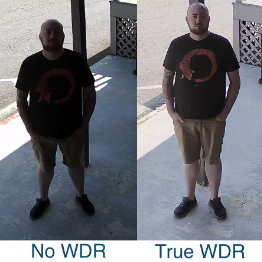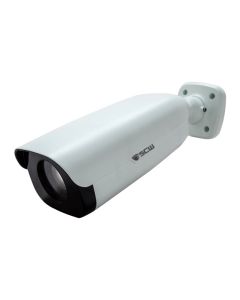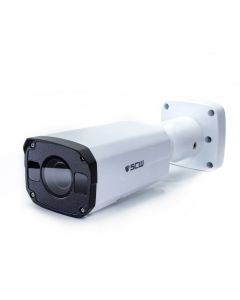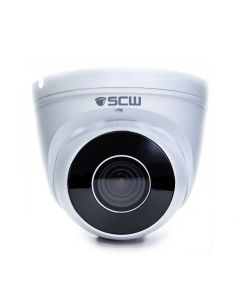The higher the dB rating the better your camera will be at seeing into shadows.
What is WDR (Wide Dynamic Range)?
For decades, higher end IP security cameras have included Wide Dynamic Range (WDR) Chips. WDR takes a low light optimized and a high light optimized image setting and stitches the two photos into one image to prevent shadows from being too dark. The industry standard way of describing WDR is to state whether it is digital or True/optical (with true/optical WDR being better since optical WDR also still has digital WDR). The industry standard way is to describe the WDR spec is to state the dB that the true/optical WDR uses, with higher dB ratings being better.
What's a dB?
The dB unit is the ratio of the brightest and the dimmest object that can be captured by the camera. This tells you the range where the WDR works. The higher the ratio, the greater the difference between the low light and high light spectrum that the camera can capture and the better your picture will be. This is why high dB ratios are better - they can capture a larger spectrum of lighting conditions, including difficult scenes with both very bright lights (like windows) and very dark objects (like shadows).
Wide dynamic range is extremely important if you want to backlit faces or license plates (the headlights often cause the light variation).
Here's our Cameras with WDR:

Lean on the experts
We'd be happy to work up a custom quote or take your floorplan and create a security coverage map.
Get aCustom Quote












